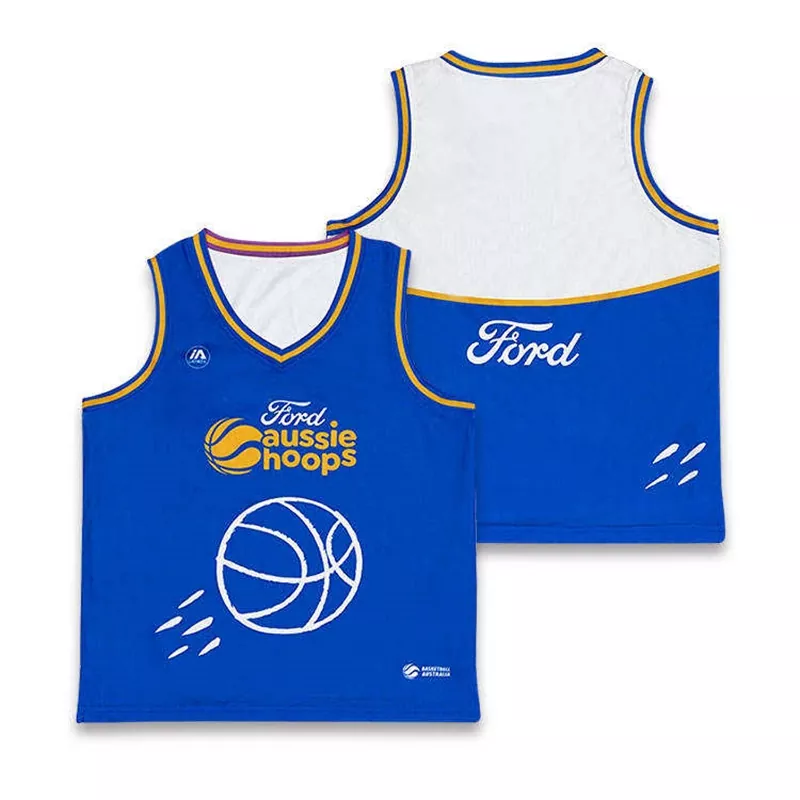The Evolution of Basketball Uniforms: From Simple to Stylish
2025-06-06
Basketball uniforms have come a long way since the game was first played in the late 19th century. What started as a simple, functional outfit designed for movement and comfort has transformed into a fashion statement that represents team pride, brand identity, and player performance. In this blog, we’ll explore the evolution of basketball uniforms, from their early days to the modern, high-tech gear worn by today's athletes.
1. The Early Days of Basketball Uniforms: Simplicity and Functionality
When basketball was invented by Dr. James Naismith in 1891, the first teams wore simple uniforms that reflected the practicality of the game. Players typically wore:
Knickerbockers (or shorts): These knee-length pants were common during the era and allowed for movement, although they were quite restrictive by today's standards.
Cotton Jerseys: These were loose-fitting and made of breathable cotton fabric.
Canvas Shoes: The shoes were often heavy, flat-soled, and more akin to boots than the lightweight, performance-driven sneakers we see today.
In these early years, there was no emphasis on branding or team identity. The focus was strictly on comfort and function. But as the game grew in popularity, the need for specialized uniforms became more apparent.

2. The 1950s to 1970s: Team Identity and The Rise of Customization
By the 1950s and 60s, basketball uniforms started to look more like what we recognize today, with a focus on branding and team identity. The introduction of numbers on jerseys in the 1930s helped fans and officials identify players more easily. By the 1950s, teams began to embrace specific colors and logos, marking the beginning of a shift toward personalized and unique team uniforms.
Fabric Innovations: Polyester and other synthetic fibers began to replace cotton during this time, improving the durability and moisture-wicking qualities of the uniform.
Shorter Shorts: The knee-length knickerbockers were replaced with shorter, more flexible shorts, making it easier for players to run and jump.
3. The 1980s and 1990s: The Rise of Style, Logos, and Sponsorships
The 1980s and 90s were a game-changer for basketball uniforms in terms of both style and technology. This era saw the NBA's golden age, with iconic players like Michael Jordan, Magic Johnson, and Larry Bird leading the way. As television broadcasts became more popular, teams and players began to understand the importance of visual appeal.
Bold Colors and Patterns: Teams started to incorporate more vibrant colors, patterns, and designs into their uniforms. The Chicago Bulls' red, black, and white uniforms became iconic, while the Los Angeles Lakers maintained their recognizable gold and purple.
Sponsorships and Branding: Corporate sponsorships began to play a significant role in uniform design. This marked the beginning of the modern era of basketball uniforms, where companies like Nike, Adidas, and Reebok took over the manufacturing of jerseys, introducing performance-driven fabrics and designs.
The “Baggy” Look: The 1990s brought about a trend of baggier shorts, thanks in part to the influence of players like Michael Jordan and his peers who favored longer, looser shorts for greater freedom of movement.
4. The 2000s and Beyond: Innovation and Technology in Uniforms
As the 21st century arrived, basketball uniforms became not only a representation of a team’s identity but also a tool for enhancing performance. The focus shifted toward advanced materials and technologies that could improve player comfort and performance.
Moisture-Wicking Fabrics: Modern uniforms use moisture-wicking fabrics like polyester blends, which help keep players dry during intense games by pulling sweat away from the body.
Performance Fabrics: Manufacturers began integrating advanced technologies such as Nike's Dri-FIT and Adidas' ClimaCool, which regulate temperature and enhance breathability.
Lightweight and Flexible: Modern basketball uniforms are designed to be lightweight, with mesh panels or ventilation zones that keep athletes cool and allow for better movement.
Reversible and Alternate Uniforms: Teams began to design alternate jerseys for special occasions, often featuring throwback designs or unique concepts. This added variety and excitement to the sport and the merchandise market.
5. Today: The Role of Social Media and Customization
In today’s world, basketball uniforms are not only about performance but also about making a statement. Social media has given fans more access to their favorite teams and players, making uniform design even more important. Fans want to feel connected to the game, and customized jerseys are now a staple in the merchandise market.
Personalized Jerseys: Fans can now order jerseys with their favorite player’s name or even customize them with their own name and number.
Fashion Meets Function: Many professional players and teams are seen as style icons, and their uniforms often reflect a mix of high-fashion and sport.
Collaboration with Designers: Several NBA teams have worked with renowned designers or brands to create unique, fashion-forward uniforms that make a statement on the court.
Conclusion:
The evolution of basketball uniforms is a fascinating reflection of the growth of the sport itself. From the simple, functional designs of the early years to the performance-enhancing, stylish outfits worn by today’s players, basketball uniforms have come to represent much more than just team affiliation. They are an essential part of the game’s culture, identity, and legacy, continuously evolving to meet the needs of players and fans alike.


